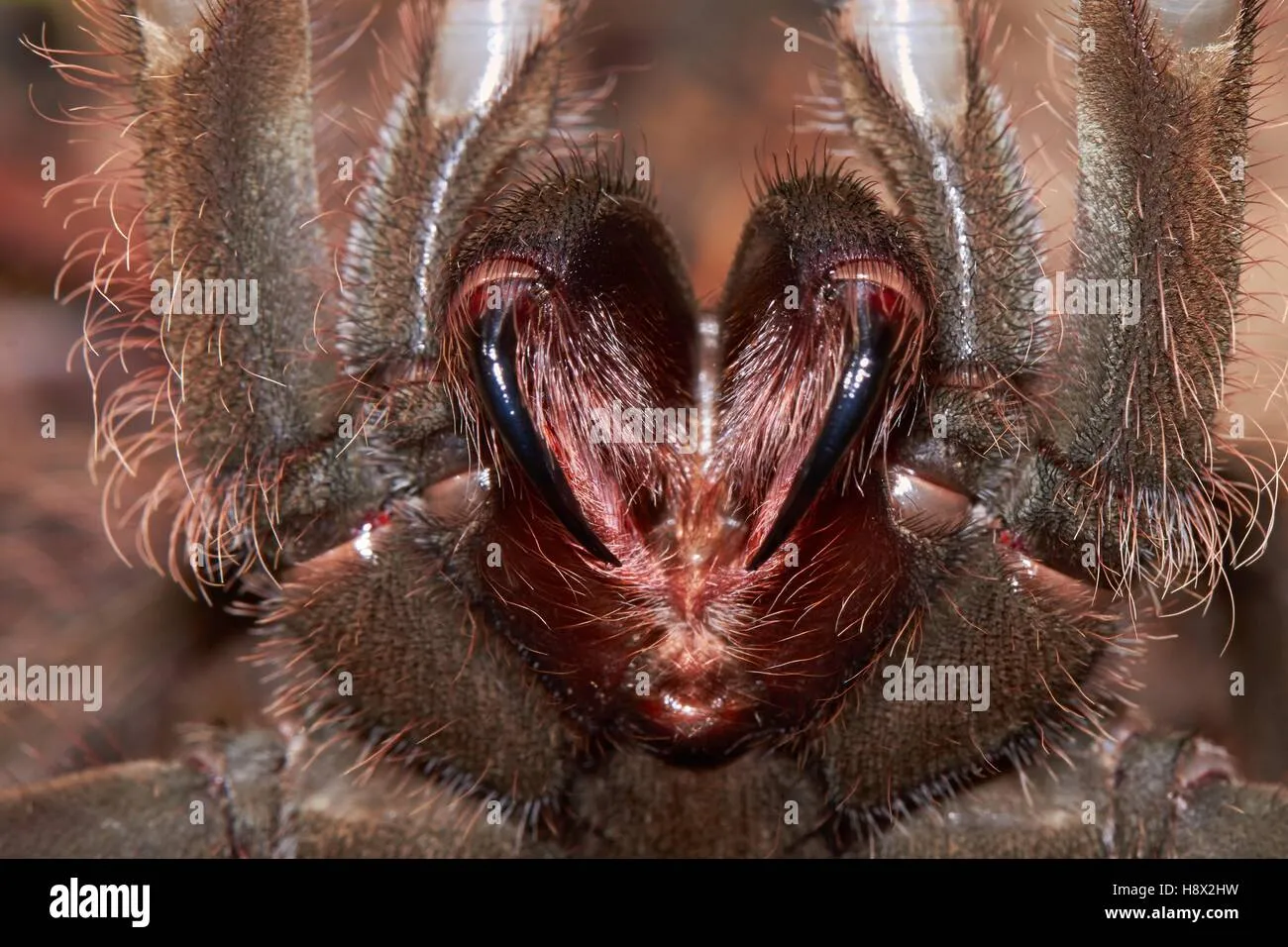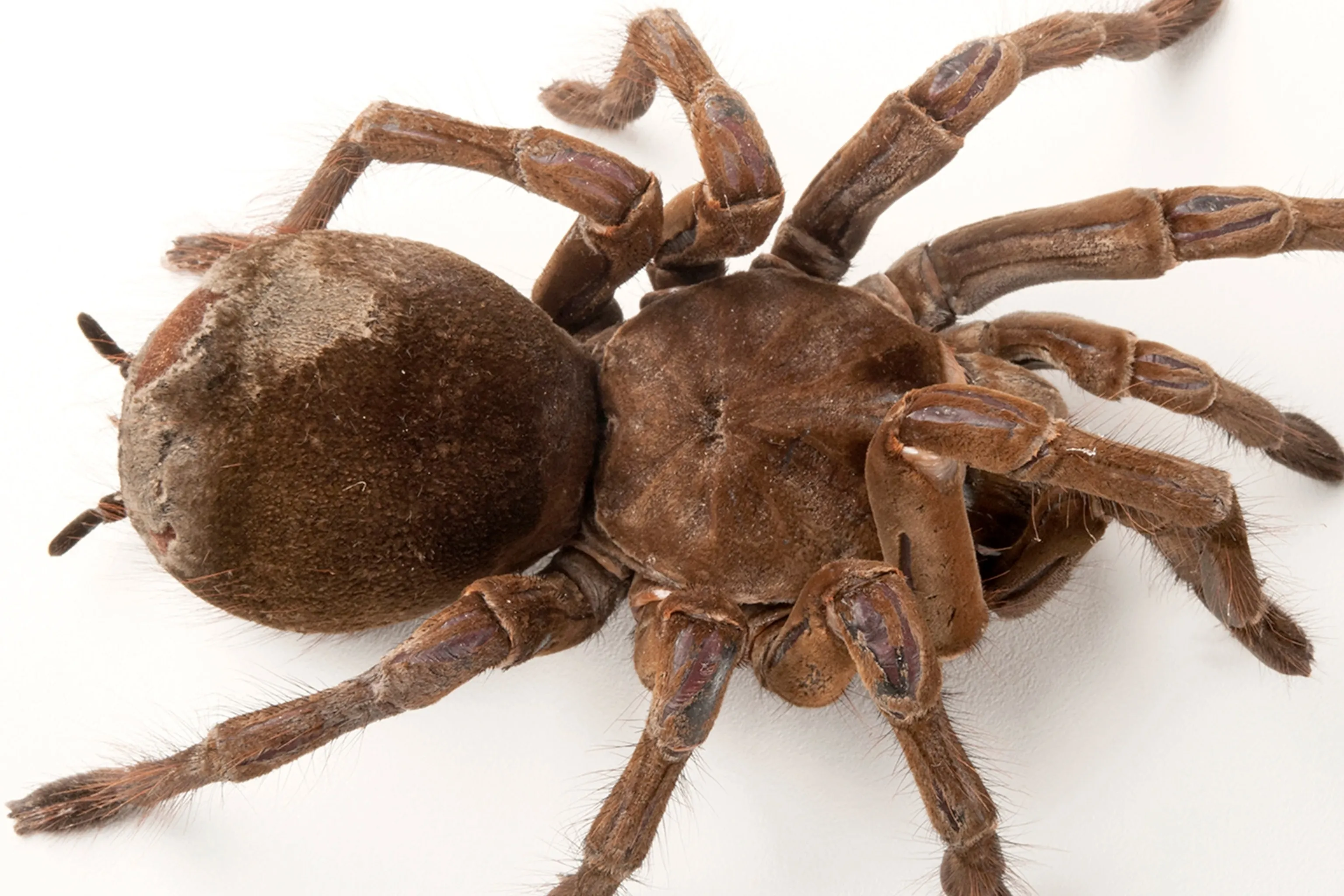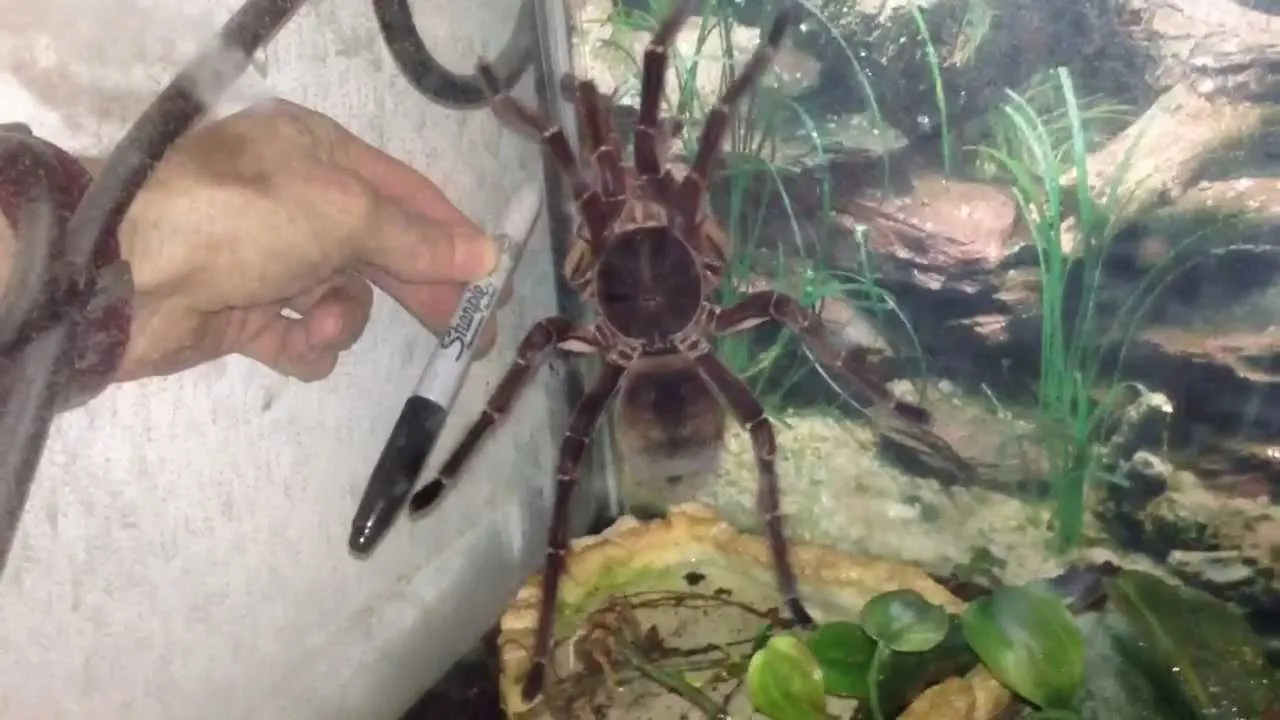What is a Goliath Birdeater?
The Goliath birdeater (Theraphosa blondi) is a species of tarantula native to the rainforests of northern South America. It’s the second-largest spider in the world by leg span, and it’s known for its impressive size and intimidating appearance. These spiders are a fascinating part of the ecosystem, often misunderstood due to their size and reputation. They are a popular choice among arachnid enthusiasts, and their unique characteristics make them a subject of both fear and fascination. Learning more about these creatures helps to dispel myths and appreciate their role in the natural world.
Appearance and Characteristics
The Goliath birdeater is a sight to behold, with a robust body covered in bristly hairs. Their coloration typically ranges from dark brown to reddish-brown, providing excellent camouflage within their forest habitat. Their legs are thick and powerful, essential for both movement and capturing prey. The spider’s chelicerae, or mouthparts, are strong and capable of delivering a painful bite. The females are generally larger than the males. Their large size and formidable appearance often lead to misconceptions about their behavior and danger to humans. This appearance is crucial to their survival and the way they interact with their environment.
Size and Physical Features

The Goliath birdeater can have a leg span of up to 12 inches (30 cm) and weigh over 6 ounces (170 g). This makes them the largest spider by mass and the second-largest by leg span. Their size is a significant factor in their hunting ability and how they interact with their environment. They possess large fangs, which they use to inject venom into their prey. Their entire body is covered in sensory hairs which help them detect vibrations and movement. These characteristics contribute to their hunting prowess and overall survival in their native habitat.
Habitat and Distribution
Goliath birdeaters are native to the rainforests of northern South America, including countries like Brazil, Venezuela, Guyana, Suriname, and French Guiana. They thrive in humid environments, preferring to live in burrows they create in the ground. They often inhabit areas with high humidity, dense vegetation, and access to prey. The spider’s distribution is limited to these specific environments, which is crucial for their survival. Understanding their habitat helps to understand their behavior and the conservation efforts needed to protect them.
Where Do Goliath Birdeaters Live?
These spiders are typically found in burrows they dig or in abandoned animal burrows. They line these burrows with silk to create a comfortable and secure environment. The location of the burrow is often near a food source, allowing them to ambush prey effectively. They prefer to live in areas with plenty of leaf litter, which provides cover and helps maintain humidity. They are nocturnal hunters, so they usually stay hidden during the day. Their habitat choice demonstrates their need for a safe, humid environment with access to food.
Diet and Hunting Strategies

Goliath birdeaters are opportunistic predators, meaning they eat a variety of prey. They primarily feed on insects, but their diet can also include small vertebrates such as lizards, frogs, and even, occasionally, small birds. They are ambush predators, waiting patiently in their burrows or near them for prey to come close. When prey is within reach, they strike quickly, injecting venom to paralyze the victim. The spider then uses its chelicerae to break down the prey and consume it. Their hunting strategy relies on their size, speed, and venomous bite.
What Do Goliath Birdeaters Eat?
Their diet consists mostly of insects such as beetles and crickets, but larger specimens have been known to eat small vertebrates like lizards, frogs, and rodents. Despite their name, birds rarely make up a significant part of their diet. Their food choices vary depending on their size, location, and availability of prey. They are voracious eaters, capable of consuming large amounts of food relative to their size. Their diet is an essential aspect of their ecology, impacting the local food chain.
The Bird-Eating Myth
The name ‘birdeater’ comes from an early engraving that depicted a Goliath birdeater consuming a hummingbird. While they have been observed eating small birds on rare occasions, birds are not a regular part of their diet. The name has perpetuated the myth. Their primary diet is insects and other invertebrates. Their opportunistic feeding habits may, at times, include birds, but this is not their primary food source. This highlights how a single observation can become a widely accepted misconception.
Interesting Behaviors

Goliath birdeaters exhibit several interesting behaviors. They can stridulate, producing a hissing sound by rubbing their legs together, which serves as a warning signal. They also have urticating hairs on their abdomen, which they flick at potential threats. These hairs cause irritation upon contact, acting as a defense mechanism. They are generally solitary creatures, except during mating season. Their behaviors demonstrate how they’ve adapted to survive in their environment. Their unique characteristics make them a fascinating subject of study for biologists and arachnologists.
Venom and Toxicity
The Goliath birdeater’s venom is not considered lethal to humans. A bite from this spider can be painful due to their large fangs, causing local pain, redness, and swelling. However, their venom is not particularly potent. The primary risk is due to the potential for infection at the bite site. Handling them can also result in irritation from the urticating hairs. While their bite is not life-threatening, it can be an unpleasant experience. Understanding their venom and toxicity is essential for safe handling and interacting with these spiders.
Are Goliath Birdeaters Dangerous to Humans?
No, Goliath birdeaters are not considered dangerous to humans. Their venom is not potent enough to cause serious harm. The biggest concern is the potential for a painful bite and irritation from their urticating hairs. The spiders are generally docile and prefer to avoid confrontation. However, it’s important to treat them with respect and avoid handling them unless you are experienced. These spiders are more of a threat to their prey than they are to humans. Proper precautions are advised when keeping them as pets.
Lifespan and Life Cycle

Goliath birdeaters have a relatively long lifespan compared to many other spiders. Females can live for 15 to 25 years, while males typically live for a shorter period, often around 3 to 6 years. Their life cycle includes several molts, during which they shed their exoskeleton to grow. The spiders reach maturity after several years. Their longevity and life cycle are interesting features that attract many arachnid enthusiasts. Understanding their life cycle is key to providing them with proper care in captivity and preserving their species.
How Long Do Goliath Birdeaters Live?
Female Goliath birdeaters can live for a long time, ranging from 15 to 25 years under optimal conditions. Males have a shorter lifespan, typically only living for a few years after reaching maturity. The lifespan of these spiders is influenced by factors such as diet, environment, and overall health. Their longevity is remarkable, making them a long-term commitment for those who choose to keep them as pets. Proper care is essential to help them reach their full lifespan.
Conservation Status and Threats
The Goliath birdeater is not currently listed as an endangered species, but they face threats to their populations. Habitat loss due to deforestation and human encroachment is a significant concern. They are also collected for the pet trade, which can impact wild populations if not managed sustainably. Conservation efforts include protecting their natural habitat and regulating the pet trade. Awareness and education are vital to ensuring their survival. Their conservation status underscores the importance of preserving their natural environment.
Are Goliath Birdeaters Endangered?

While not currently listed as endangered, Goliath birdeaters face ongoing threats that could impact their populations. Deforestation and habitat destruction are primary concerns, leading to the loss of their natural environments. The demand for them in the pet trade also presents a potential threat if not managed carefully. Efforts to protect their habitat and regulate the pet trade are crucial to ensure the continued survival of these spiders. It’s essential to monitor their populations and implement conservation strategies to protect them.
Conclusion
The Goliath birdeater is a remarkable species, displaying unique characteristics and behaviors. From their impressive size and hunting strategies to their role in the ecosystem, these spiders are a fascinating part of the natural world. Understanding their habitat, diet, and conservation needs is crucial for appreciating and protecting them. While they may appear intimidating, they are not typically dangerous to humans, and their role in their native environment is essential. Continuing to learn about the Goliath birdeater enhances our appreciation for biodiversity and the importance of conservation efforts.
